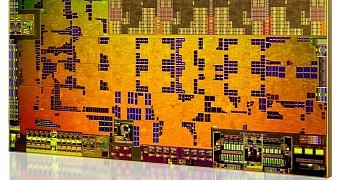AMD's split with Taiwan Semiconductor Manufacturing Company was one of the biggest developments on the GPU market this year. However, it appears that in the end the split wasn't total.
This is the second part of the report that goes against pretty much everything that previous ones have said up to this point.
Either it's inaccurate and/or deliberately misleading, or the ones that came before were so radical that AMD decided to let a few details slip to the web to set things somewhat straight.
We're thinking the former, to be perfectly honest, especially considering that idea that AMD won't move from 28nm to 20nm.
After hearing about the next range of GPUs being delayed because Apple and Qualcomm hogged all the 20nm orders, we kind of find it hard to believe that AMD will stick to an architecture after already being forced to do so for a whole year more than originally planned.
Digression aside, the folks at BitsandChips.it have said that AMD has not, in fact, cut all relations with TSMC.
AMD Zen CPUs to be based on 16nm FinFET node
This is the part that clashes directly with previous reports, which said that AMD had enlisted Globalfoundries to make all its CPUs, GPUs and APUs. No exception.
However, it would make some sense for the Sunnyvale, California-based company to not cut off all contact so suddenly.
In any event, the word now is that AMD's Bulldozer Architecture will be succeeded by Zen CPUs either next year or in 2016.
These Zen CPUs will be designed on the 16nm FinFET fabrication node and have a radically different core design. Probably. There were no details of any kind.
With TSMC not expected to have 16nm mass production ready before 2016 (when NVIDIA intends to launch 16nm GPUs), we won't be hoping for Zen to arrive any sooner.
Possible processor designs
AMD may or may not go beyond the 8-core count of the present. Since the core design is supposed to be so different, performance will go up regardless.
Big green/red will likely keep the module-based format (with two cores per module), to allow for easy scaling and customization in case someone wants specific applications, like supercomputer and console builders.
Each module may have an ARM-based security processor. In fact, AMD could go one step further and do something like NVIDIA's 4-PLUS-1 Tegra, with a smaller ARM-based CPU integrated into the larger one.
The x86 Zen modules would do the heavy lifting, but the ARM-based chip could take over for easy stuff like web browsing and reading e-books, saving power.

 14 DAY TRIAL //
14 DAY TRIAL //